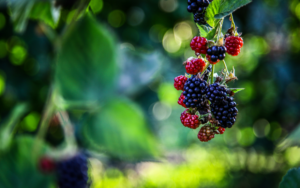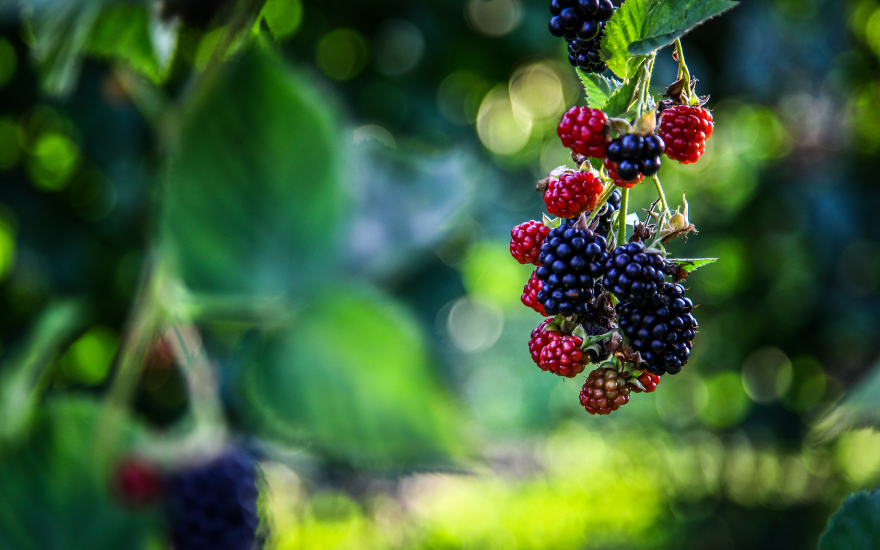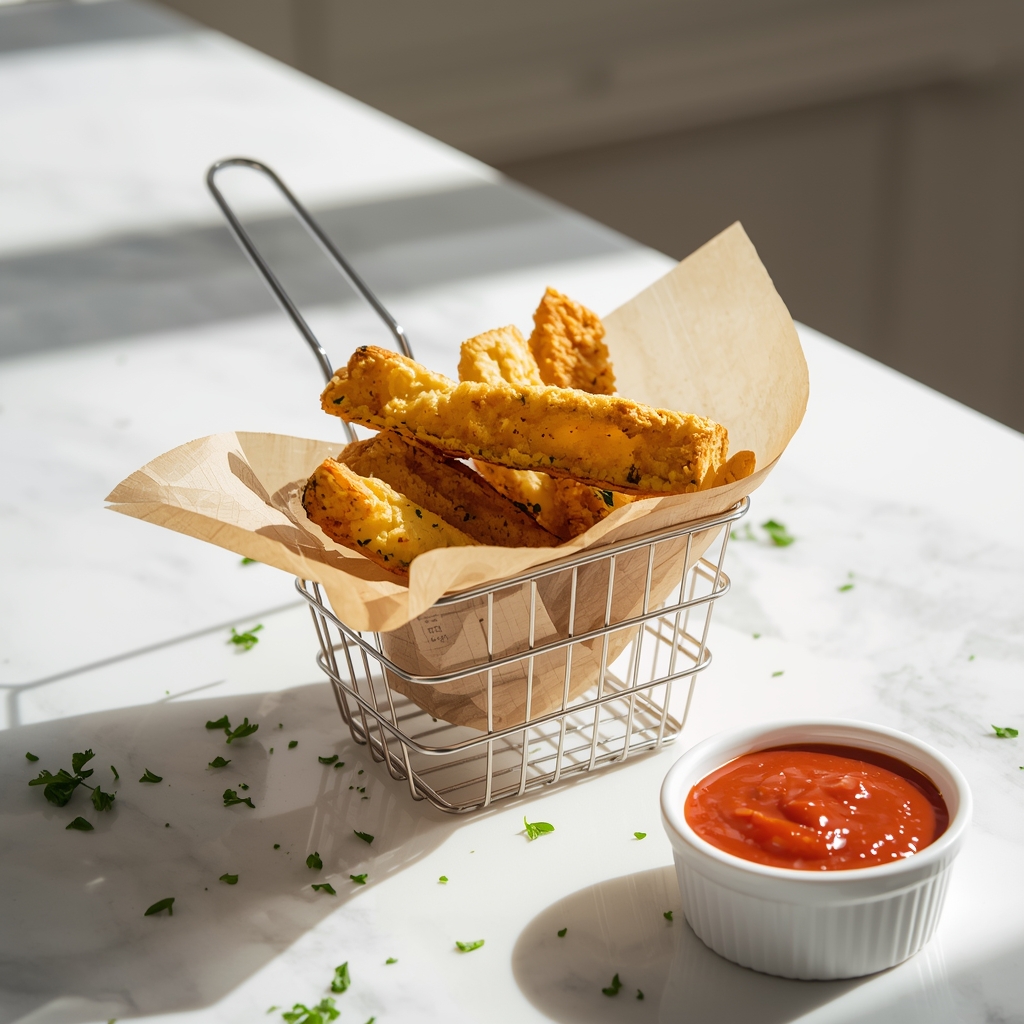Starting a garden with blackberry seeds can be an enriching endeavor. Seeding blackberries requires understanding the growth process, from seed stratification to the critical early stages of seedling care. With proper planning and attention to detail, you can set the stage for a bountiful blackberry harvest. The first step is selecting the right blackberry varieties that are suited to your climate and garden space. Blackberries thrive in a wide range of environments, but they do have specific needs in terms of sunlight and soil conditions.

Preparing the soil is critical to the success of your blackberry plants. These robust berries demand soil rich in organic matter and good drainage to prevent waterlogged roots, which can lead to plant diseases. You also need to focus on planting and caring for your blackberries correctly. Ensure they receive one inch of water per week, more if the temperature is particularly high. By supporting your blackberry bushes with a trellis system, especially the trailing varieties, you can encourage healthy growth and ease of harvest. Ultimately, maximizing blackberry growth and yield comes down to your commitment to regular maintenance throughout the growing season, including pruning, fertilizing, and disease management.
Key Takeaways
- Selecting suitable blackberry varieties and understanding their needs is crucial.
- Soil preparation and consistent care influence the success of blackberry seedlings.
- Proper maintenance can lead to a robust blackberry harvest.
Selecting the Right Blackberry Varieties

In my experience, choosing the right blackberry varieties is crucial for both home gardeners and commercial growers. Factors like berry size, sweetness, climate resilience, and thorn presence impact your blackberry experience.
Understanding Different Blackberry Types
Two main types of blackberry plants are prevalent in cultivation: erect blackberries and trailing blackberries. Erect blackberries stand upright and are hardier, while trailing blackberries, as the name suggests, grow along the ground and may need support. Each type includes thorny and thornless cultivars, which are worth considering based on your handling preferences and end-use.
Advantages of Thornless Varieties
Thornless blackberries such as ‘Apache’ offer significant advantages: they’re easy to handle and pick, making them a favorite among growers who prioritize comfort and efficiency. The memories of scratched arms during harvest are long gone with these cultivars, as well as they tend to be quite hardy, with some like ‘Apache’ known for their large and sweet berries.
Considering Climate and Region for Cultivars
Choosing the right cultivars involves considering your climate and region. For example, ‘Darrow’ is noted for its sweetness and is one of the most cold-hardy varieties, ideal for regions that experience harsh winters. When selecting blackberries, check the USDA hardiness zone that each cultivar is best suited for to ensure successful growth and fruiting.
Preparing the Soil for Planting

Before diving into specific aspects of soil preparation, it’s imperative to acknowledge that blackberries require soil rich in nutrients, with adequate drainage and a balance of organic matter, which collectively foster a conducive setting for growth.
Soil Composition and Nutrients
When it comes to soil composition, ensure that the soil is fertile with a proper balance of sand, silt, and clay. Blackberries thrive in soil with a pH level between 6.0-6.5, which allows the roots to absorb the necessary nutrients effectively. I conduct a soil test before planting, which informs me if any adjustments to the pH or nutrient levels are necessary.
- Key Nutrients: Nitrogen, phosphorus, and potassium are vital for healthy blackberry plants.
- Soil Testing: Checking pH levels and nutrient content helps tailor the soil conditions to blackberries’ needs.
Ensuring Proper Drainage
Well-draining soil is crucial to prevent waterlogging, which can lead to root diseases and negatively impact the blackberry plants. You can check the drainage capability by digging a hole about a foot deep and filling it with water. If it drains within a couple of hours, the drainage is satisfactory.
- Drainage Check: A simple water test in a foot-deep hole can indicate the soil’s drainage rate.
- Improvement Tips: To improve drainage, you may incorporate sand or organic materials like peat moss into the existing soil structure.
Amending Soil with Organic Matter
Organic matter plays a pivotal role in soil composition by enhancing its fertility and water retention abilities. Add compost or well-rotted manure to amend the soil, which also introduces beneficial microorganisms that support plant health.
- Compost and Manure: A blend of these materials enriches the soil with nutrients and enhances its structure.
- Mulching: Applying a layer of mulch helps retain moisture, suppress weeds, and regulate soil temperature.
By focusing on these fundamental aspects—soil composition and nutrients, proper drainage, and the incorporation of organic matter—you lay a robust foundation for your blackberry plants to prosper.
Planting and Caring for Your Blackberries
Successfully growing blackberries starts with proper planting and continues with diligent care. My guide will ensure you establish and maintain a healthy blackberry patch, from ideal spacing and planting strategies to pruning and protecting your plants.
Optimal Spacing and Planting Techniques
For planting blackberry seeds, it’s essential to give each plant enough space to thrive. I recommend planting blackberry bushes 3-4 feet apart with rows set 8 feet apart to ensure adequate air circulation. When transplanting, place the seeds about a quarter-inch deep into a mixture of well-draining soil and organic compost, ensuring they get the best start possible.
Watering and Mulching Strategies
Initially, blackberries need steady watering to help establish roots, usually about 1-2 inches of water per week. Use mulching as a technique to keep the soil moist and to regulate the soil’s temperature; straw or wood chips are excellent mulches for blackberries. Remember, consistent moisture is crucial, but avoid overwatering to prevent root rot.
Protecting Plants from Pests and Diseases
Blackberries are susceptible to pests and diseases, so inspect the leaves and stems regularly for signs of trouble. Take immediate action when necessary, such as introducing natural predators or using organic pesticides. Good practices include keeping the area free of debris where pests might hide.
Maintenance and Pruning for Healthier Plants
Pruning is vital for the health of your plants. Remove any dead or diseased foliage and thin out the plants to allow sunlight to reach the interior. Each year, cut back the canes that have produced fruit, as blackberries bear on second-year canes. This helps stimulate growth for the next season’s crop. Regular removal of suckers and maintaining the structure of the plants through pruning ensures a bountiful harvest.
Maximizing Blackberry Growth and Yield
To achieve a bumper crop of large, sweet blackberries, I focus on several horticultural practices that enhance fruit quality and yield. By adjusting how I manage sunlight exposure, plant support, and nutrient input, I can influence the sweetness, size, and health of the fruit.
Strategies for Enhancing Fruit Sweetness and Size
I’ve discovered that to enhance the sweetness and size of blackberries, the key lies in consistent watering and careful selection of varieties. Blackberry cultivars that are known for larger, sweeter fruit provide the best start. Make sure these plants receive ample water, especially during fruit development, as drought stress can lead to tart, smaller berries. By encouraging ripe, sweet berries, you’ll be pleased with the burst of flavor at harvest time.
Optimizing Sunlight Exposure and Trellis Use
To maximize the growth and yield of blackberries in your garden, position them to receive full sun. Blackberries thrive with at least 6-8 hours of direct sunlight per day. I’ve found that using a trellis not only supports their growth habit but also optimizes sunlight exposure to all parts of the plant, which is critical for fruit production and ripening. Additionally, a trellis system facilitates easier harvesting and better air circulation, reducing disease pressure.
Supplementing with the Right Fertilizers
Proper fertilization is essential for blackberry plants. Introduce a balanced fertilizer that provides essential nutrients, focusing on nitrogen in the early growing season to boost vegetative growth. Then, switch to potassium and phosphorus closer to the fruiting season to support fruit development. By tailoring the nutrient regimen according to the plant’s growth stage, you ensure the blackberries receive the optimal nutrition for their yield and growth needs.
Enjoying the Harvest

After nurturing blackberries from seeds, the time finally comes to savor the fruits of your labor. Knowing when and how to pick the berries, as well as creative ways to utilize them, ensures that you get the most out of your homegrown harvest.
Proper Techniques for Picking and Storing
When my blackberries turn a deep, even color and gently pull away from the plant with a slight tug, I know they are ripe for harvest. I pick them in the cool of the morning and avoid washing them until just before use to prevent spoilage.
Storing Techniques:
- For immediate consumption: Keep your ripe blackberries in a bowl, unwashed, on the countertop if you plan to consume them within a day.
- For short-term storage: Refrigerate your blackberries in a breathable container, lined with paper towels to absorb any excess moisture.
- For long-term use: Freeze your blackberries on a baking sheet before transferring them to airtight bags, ensuring a year-round supply for all your recipes.
Creative Ideas for Using Homegrown Blackberries
My homegrown blackberries are versatile; they make delightful jams, jellies, and pies. I prefer to use them in recipes where their flavor can stand out.
- Blackberry Jam: With a simple mix of fresh blackberries, sugar, and pectin, I craft my jam. I always make sure to sterilize the jars and seal them while the jam is hot.
- Dessert Recipes: Homegrown blackberries are perfect in pies and crumbles. I fold them into the batter or use them as a topping for a burst of tangy sweetness.
- Salads & Smoothies: For a refreshing twist, I toss fresh blackberries into salads or blend them into smoothies.
Following proper picking and storing techniques ensures that my harvest stays fresh and tasty, whether for immediate enjoyment or culinary exploration.

*We may earn a commission for purchases made using our links. Please see our disclosure to learn more.



